

| Officially known as the Resurrection Newmaiden Convent, the complex is commonly known as Smolny, from the Russian for tar, because the site is near where tar was stored for Peter the Great's navy. This is an odd juxtaposition given the fact that this Baroque religious complex has the kind of grandeur associated with Rastrelli's palaces. At the same time that this complex adopts the theatrical European Baroque style, it also reverts back in some ways to traditional forms, specifically here in the cathedral's central plan. Empress Elizabeth, who founded thus convent, also specified that the cathedral use the plan of the Cathedral of the Dormition in Moscow's Kremlin--a cross domed plan with five cupolas. William Craft Brumfield explains that "there is a happy irony in Elizabeth's support of the project, because the threat of exile to a convent precipitated the coup that brought her to power in 1742. Furthermore, her establishment of this institution, whose magnificence was widely publicized, provided a highly visible means of demonstrating her support for the Russian church" (251). | ||
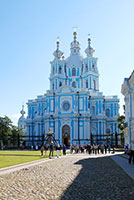 |
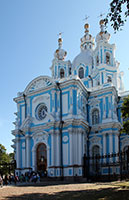 |
Cathedral of the Resurrection |
A fusion of western and eastern elementThe ribbed dome owes to the Roman Baroque while the grouping of the subsidiary cupolas around the central dome owes to the Russian pentacupolar church. Note, as well, the apse is not emphasized, typical of Orthodox architecture. Like other Baroque architecture in Russia, color is used dramatically. (See also Chevakinsky's St. Nicholas.) |
 | |
Details of the entranceThe in and out undulation, the sculptural decoration, and the broken pediment are common elements of Baroque architecture. | ||
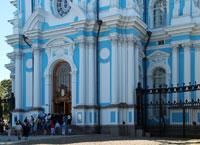 |
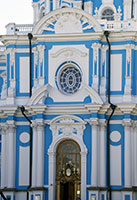 |
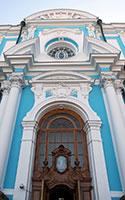 |
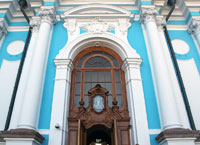 |
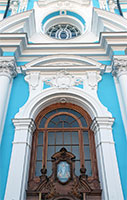 |
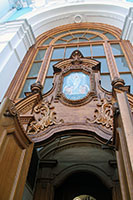 |
| Because the subsidiary cupolas are edged close to the central dome, this mass gives the cathedral a strong sense of verticality. The dome rises to a height of about 100 meters. The crosses above the five cupolas are set on shining golden orbs. | ||
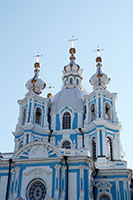 |
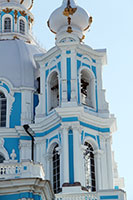 |
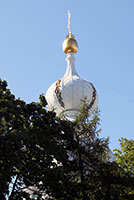 |
In and out movement and sculptural decorationNote as well, below, engaged pilasters almost obscured by the sculptural putti and decorated impost blocks. |
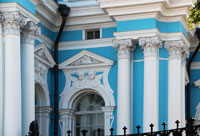 |
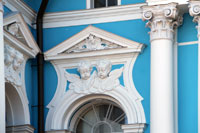 |
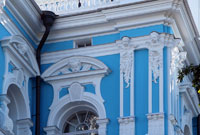 |
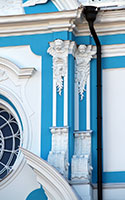 |
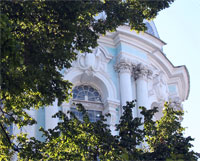 |
 Click here to return to index of art historical sites.
Click here to return to index of art historical sites.
 Click here to return to index of artists and architects.
Click here to return to index of artists and architects.
 Click here to return to chronological index.
Click here to return to chronological index.
 Click here to see the home page of Bluffton University.
Click here to see the home page of Bluffton University.

